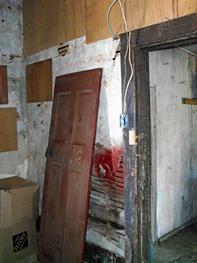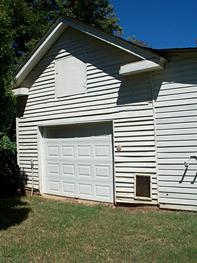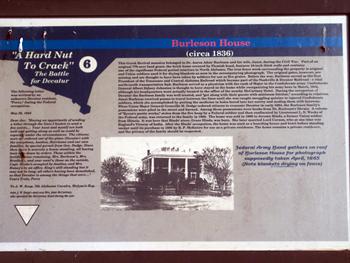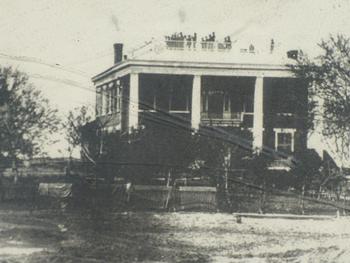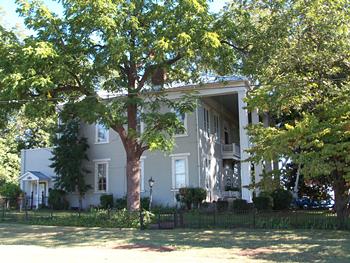|
(Sept. 2010)
Enlarge
Stop 06: "a Place of Importance. Union Leadership at Decatur
The Decatur crossing of the Tennessee River was used extensively by Union
forces. In the Fall of 1863, elements of Major General William T.
ShermanÆs Army of the Tennessee passed through Decatur on their way from
Vicksburg to Chattanooga. Union commands from the Army of the Tennessee
spent the spring of 1864 camped at Decatur, and were inspected by Major
General James B. McPherson and Sherman on March 25, 1864. On March 8,
1864, Union Major General Grenville M. Dodge and XVI Army Corps
permanently occupied Decatur and constructed a pontoon bridge and
substantial fortifications. You are near where the southern entrance to
the pontoon bridge was in 1864-1865. After the Army of the Tennessee
joined the Atlanta Campaign in late April, 1864, a permanent garrison
commanded by Colonel Charles C. Doolittle of the 18th Michigan Infantry,
and consisting of 1,500 infantry and seventeen pieces of artillery was
established here. This garrison would substantially reinforced in October,
1864. The Federal army briefly withdrew the garrison to reinforce
Nashville on November 23, but Decatur was re-occupied by Major General
James B. Steedman and a division of U. S. Colored Troops on December 27,
1864. Decatur was occupied by Union forces until the end of the war. The
last known date that Federal troops were in Decatur was June 30, 1865.
After the war Grenville Dodge would go on to serve as Chief Engineer for
the Union Pacific Railroad, responsible for the construction of the
transcontinental railroad |
|
(Sept. 2010)
Enlarge
Stop 06: Burleson House (circa 1836)
This Greek Revival mansion belonged to Dr. Aaron Adair Burleson and his
wife, Janet, during the Civil War. Part of an original 778-acre land
grant, the brick home covered by Flemish bond, features 18-inch thick
walls and contains one of the significant Federal period interiors in
North Alabama. The iron fence work surrounding the property is original
and Union soldiers used it for drying blankets as seen in the accompanying
photograph. The original gates, however, are missing and are thought to
have been taken by soldiers for use as fire grates. Before the war,
Burleson served as the first President of the Tennessee and Central
Alabama Railroad which became part of the Nashville & Decatur Railroad - a
vital north-south transportation link. Burleson served as a physician with
the rank of Major in the Confederate army. Confederate General Albert
Sidney Johnston is thought to have stayed in the home while reorganizing
his army here in March, 1862, although his headquarters were actually
located in the office of the nearby McCartney Hotel. During the occupation
of Decatur the Burleson family was well treated, and ōgot along with their
guests with minimum friction,ö according to relatives. Janet Burleson
received passes to travel between the lines until she was caught smuggling
quinine to injured Confederate soldiers, which she
accomplished by putting the medicine in holes bored into her surrey and
sealing them with beeswax. When Union Major General Grenville M. Dodge
ordered citizens to evacuate Decatur in early 1864, the Burleson familyÆs
possessions were piled in the street and burned. Among those possessions
were books from Dr. BurlesonÆs library. A volume of ōByronÆs poetic works,
ō stolen from the fire heap by a Federal soldier and then confiscated by
Lieutenant L. N. Weeks of the Federal army, was returned to the family in
1900. The home was sold in 1869 to Jerome Hinds, a former Union soldier
from Illinois. It was here that HindÆs niece, Grace Hinds, was born. She
later married Lord Curzon, who at one time was EnglandÆs Viceroy of India.
After the HindsÆ occupation, the home was used as a boarding house and
hotel before standing vacant until its purchase in 1895 by R. P. McEntire
for use as a private residence. The home remains a private residence, and
the privacy of the family should be respected |
